Step inside David Adjaye and Sue Webster's Mole House in London's Hackney
When contemporary London based artist Sue Webster aquired a derelict detached house in de Beauvoir Town, previously occupied by the eccentric ‘Mole Man of Hackney', she enlisted friend and past collaborator David Adjaye to create for her a perfectly balanced home that combines past and future, and spaces for work, art and everyday life
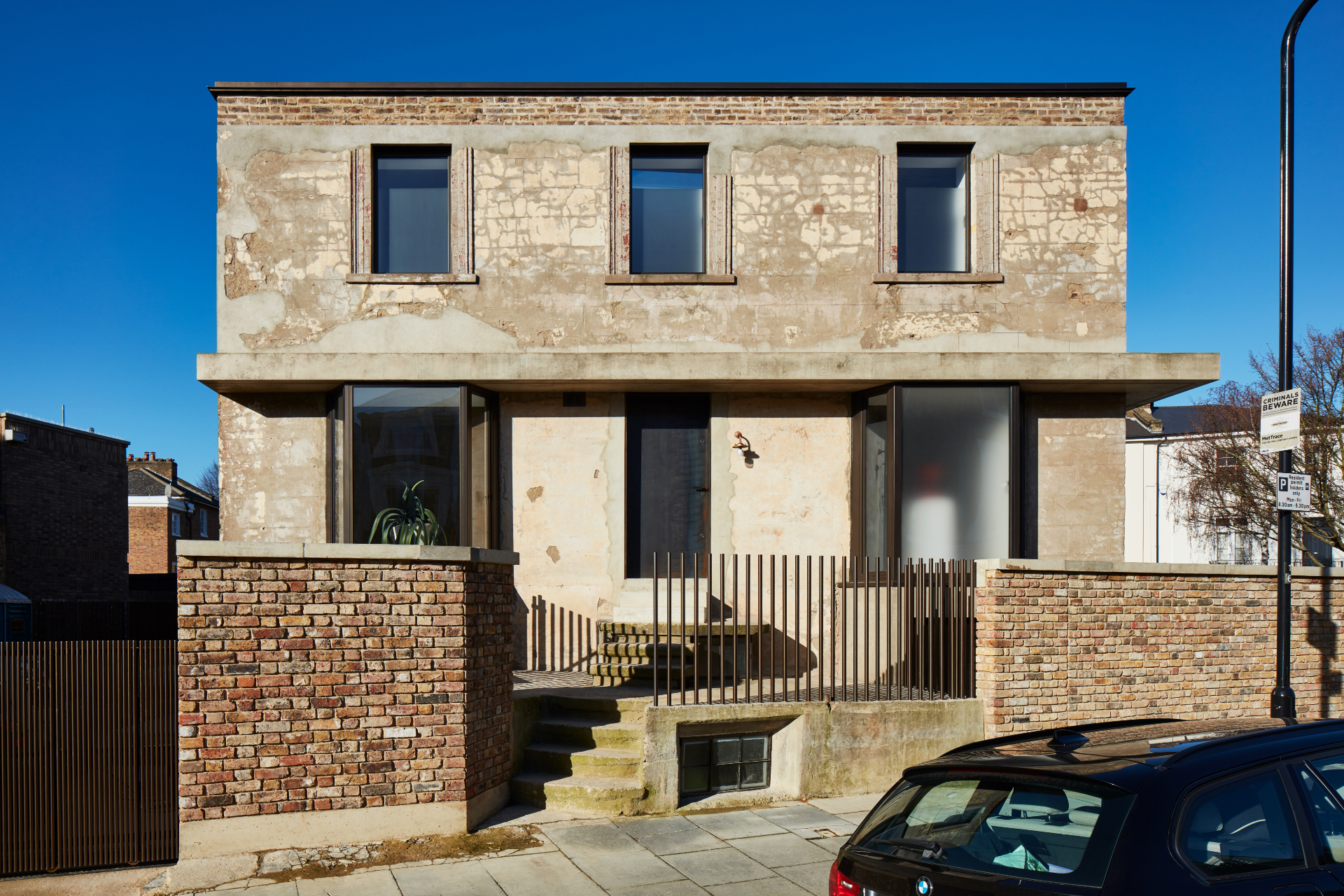
A couple of years back, Sue Webster was hunting for a new home. ‘I wanted to move out of Shoreditch', explains the London-based contemporary artist, ‘as it was becoming unbearable to live there as an artist, one didn’t have room to think for oneself. I kinda fell in love with de Beauvoir after visiting friends for Christmas one year. It felt warm and safe, but not too safe, as it was still only walking distance from the madness of Kingsland Road. I almost bought my friend’s house around the corner, but when it came to the crunch I just couldn’t bring myself to do it as it felt too "normal".'
Soon, an intriguingly odd situation provided the solution she was looking for. ‘Cycling home one day, I came across the most dilapidated house in the neighbourhood. It was boarded up, covered in scaffolding with a 2.5m high corrugated fence around it and a notice pinned to it from Hackney Council – it just said "KEEP OUT!!" – in every way, and I thought to myself "now there’s a challenge". So I called the Council to find out more and they just said ‘Google the Mole Man’, which then opened up a whole new can of worms. From that moment, I knew I just had to have it.'
Rewind just a couple of years and the house was making headlines for its rather eccentric owner, locally known as the ‘Mole Man' – a landlord who had spent years burrowing a network of tunnels beneath the property, subdividing and renting it out in a haphazard way and with no planning permission, compromising the overall structural integrity of the building. This left the house in an uninhabitable state, needing some serious design and engineering work to bring it back to life.
Webster called upon award winning architect David Adjaye, whom she worked with on a previous home (with Tim Noble), the Dirty House, to help her transform the challenging site into a flowing, modern work/live interior. Adjaye jumped to the opportunity; both architect and client were captivated by the house's architectural and social history.
‘Working with artists has always been a critical part of my practice and I’ve been lucky enough to have worked with Sue since the early stages of my career', he says. ‘The Mole House intrigued me because it had the same type of epochal quality to it as Dirty House and has really become ingrained as a piece of London’s archaeology. While the Dirty House was about a sort of industrial archaeology, the Mole House speaks to a time in London’s history that antagonized the status quo, which we then had to consider in the context of Sue’s live-work scenario. The wonderful thing was the brief was the same as the Dirty House [studio and home] so it really was about the relationship to this incredible piece of London’s history. We had to negotiate what it was that we should hold onto, what we had to let go of, and what we had to establish new relations with.'
RELATED STORY
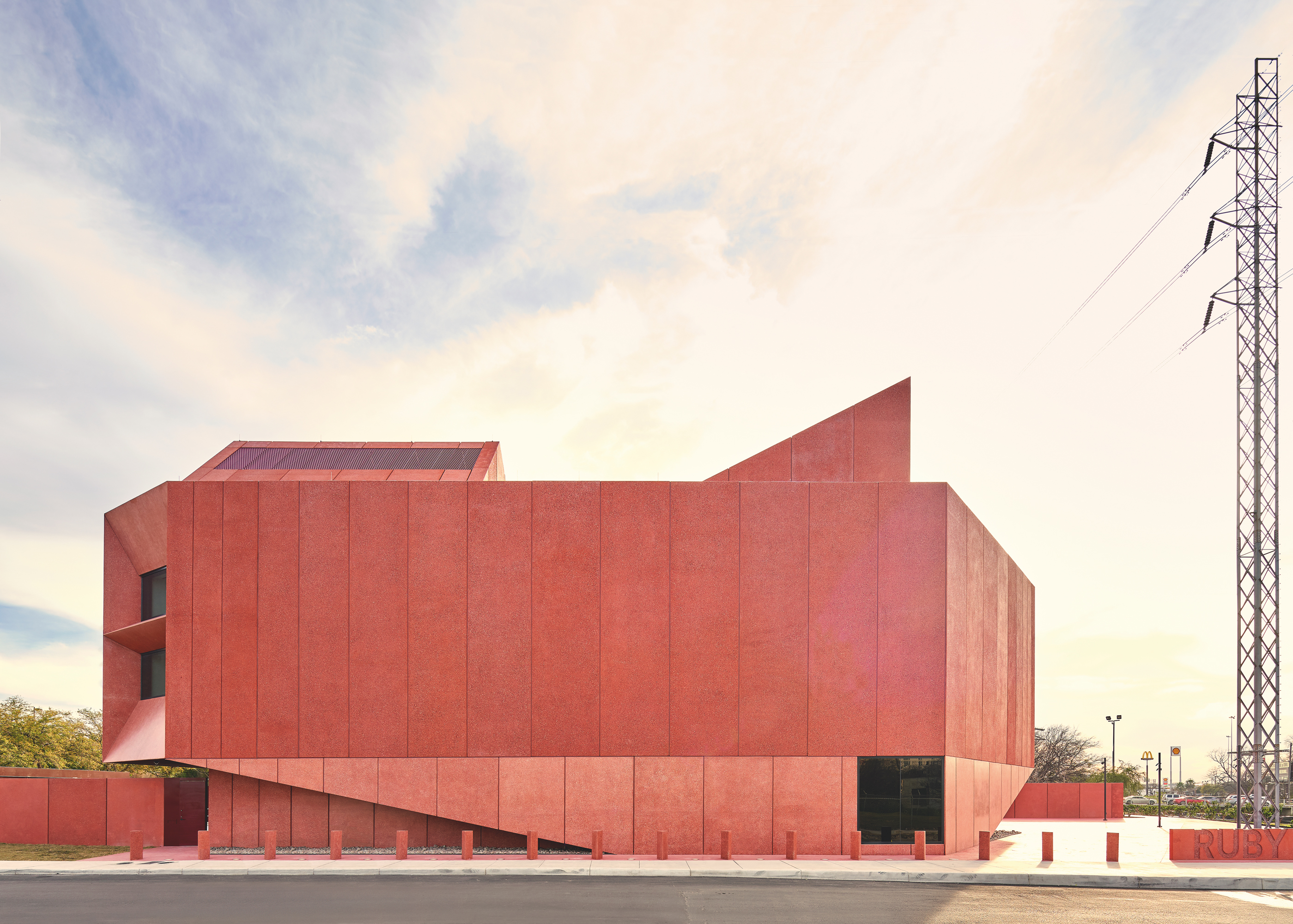
Ruby City is clad in crimson-coloured precast concrete panels made in Mexico City.
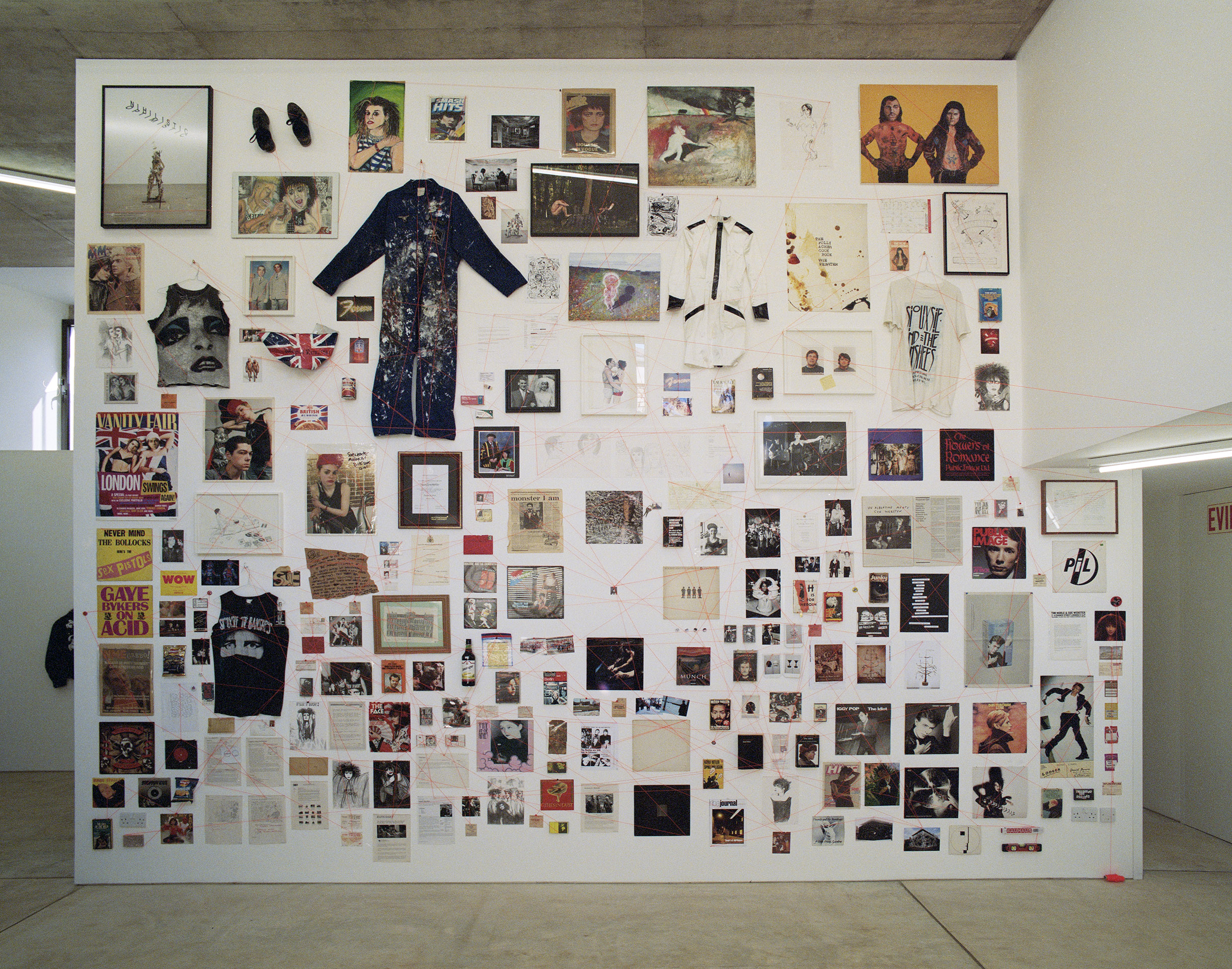
The 'Crime Scene' in the Mole House.
Treating the house in this way found Webster in complete agreement. ‘I wanted to preserve the house’s history, but also construct my own history on top,' she recalls. So, in order to revive the property, burrows were plugged with aerated concrete and some 33 tonnes of debris were removed from site. Once the house was reinstated structurally, the design developed, drawing on archaeological processes, which was no lesser challenge.
‘It was kind of like a pile of bricks that was just disintegrating— it’s an incredibly fragile piece of work! The Mole Man had really destabilized the house in ways that we couldn’t entirely understand or predict,‘ says Adjaye. ‘Another challenge was that between the time the Mole Man was taken away from it and Sue buying the house, the roof had fallen in and was dilapidated quite radically.‘
The house now spans three levels, with the top two dedicated to the residential part, including an expansive living room with large openings looking out towards the quiet residential streets, two bedrooms and a study. The lower level hosts the studio space, where Webster created her most recent piece - and the first one in this new workspace - ‘The Crime Scene', a striking composition of ephemera and artwork from the artist's teenage years. A book published by Rizzoli and entitled I Was A Teenage Banshee accompanies the work, as a part-personal memoir and part-exploration of the ongoing influence of youth, music, and Siouxsie and the Banshees.
The material palette is strong, yet fairly restricted, ranging from exposed concrete and wood, to brick, but all decisions were about ‘creating contrast and creating continuity or revealing authentic parts of history', explains Adjaye. Original masonry was preserved, exterior render was retained, and some 15,000 reclaimed bricks were used throughout. The interior was completely gutted and now a cross-shaped concrete structure in the centre of the plan helps divide different areas, as well as supports the floors.
The close, fruitful collaboration between architect and client is evident through the house's overall streamlined consistency and conceptual strength. Webster seems delighted. ‘It’s almost a cross between a second world war bunker in Berlin... and a normal house,’ she concludes.
Subscribe to Wallpaper* today and save
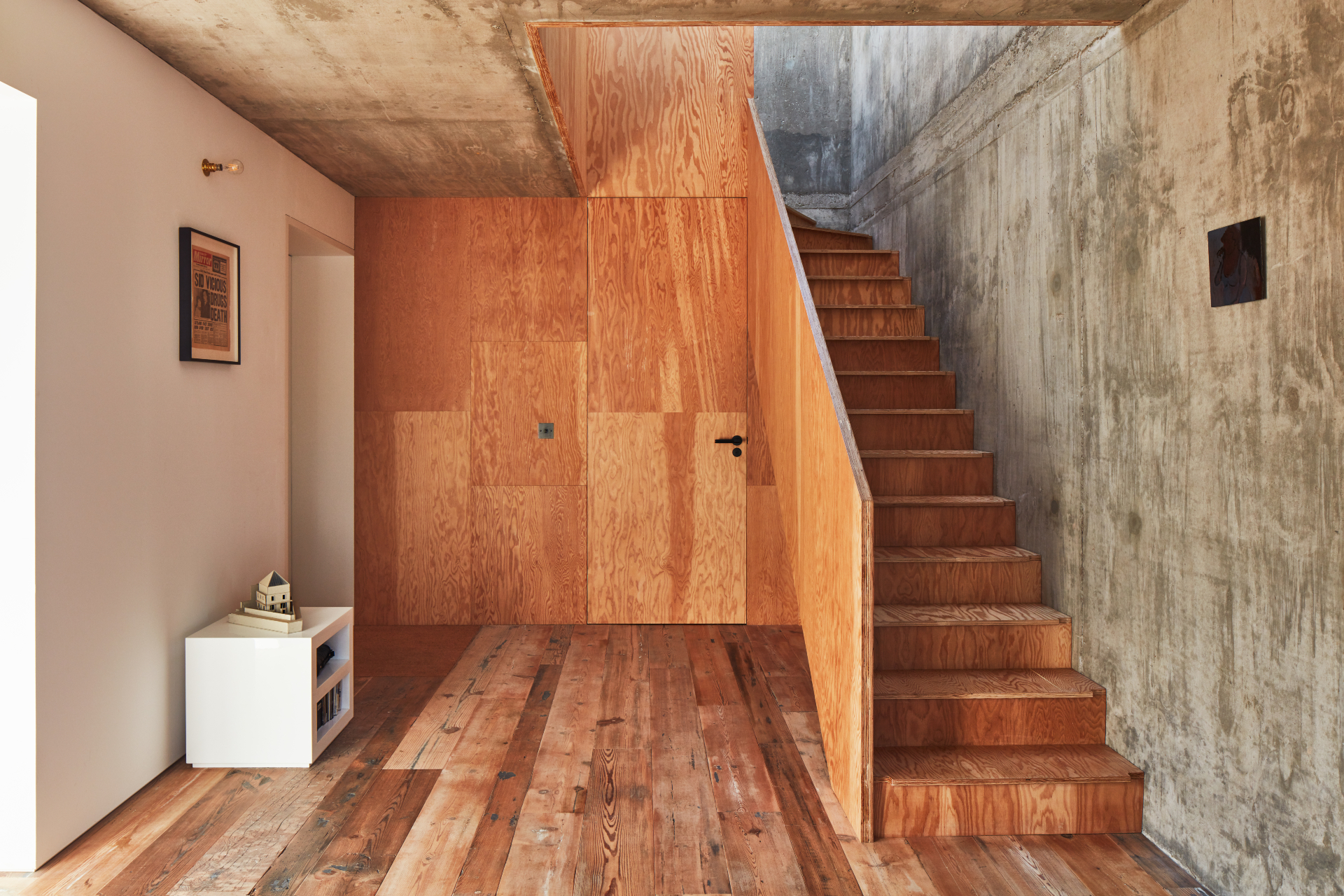
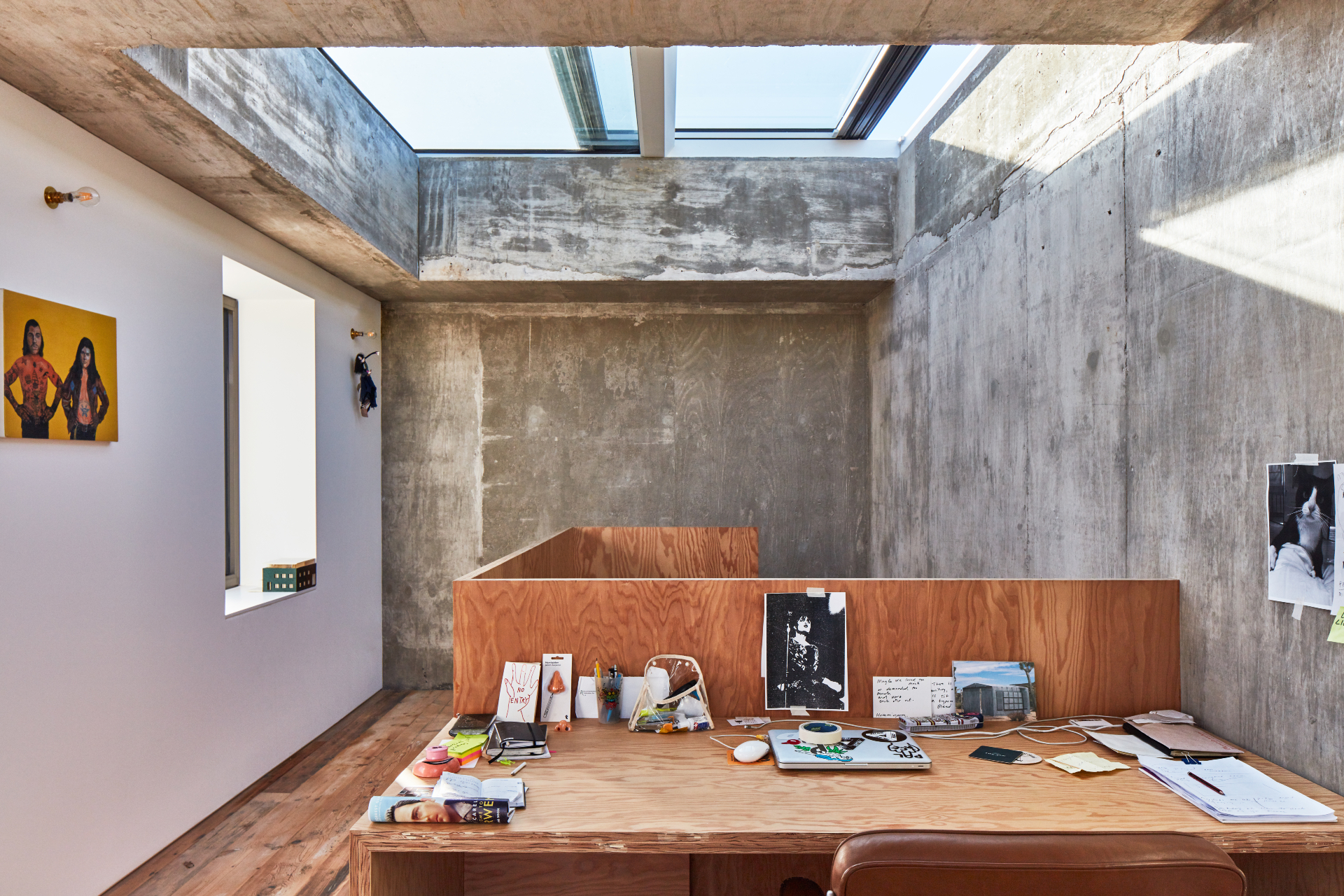
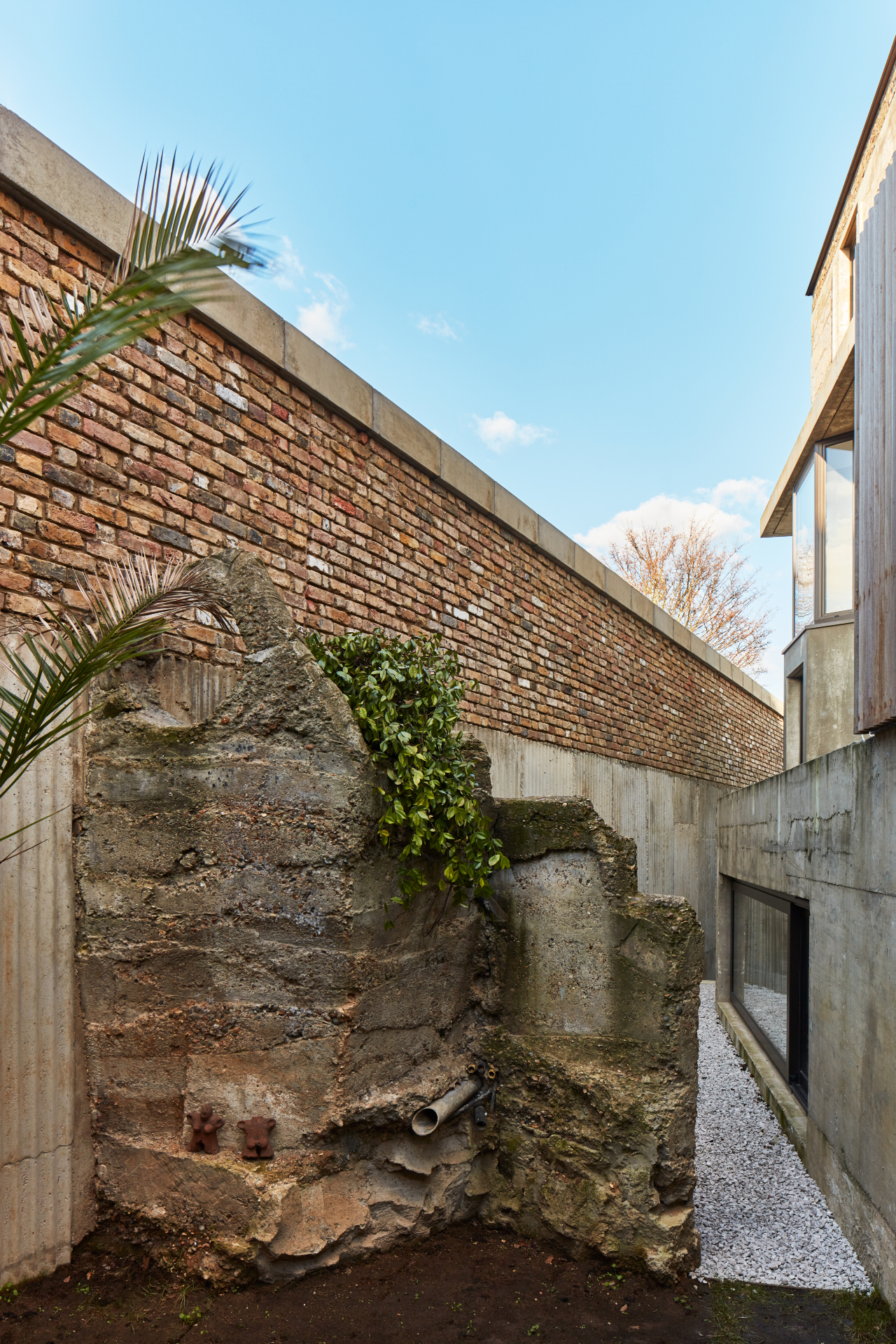
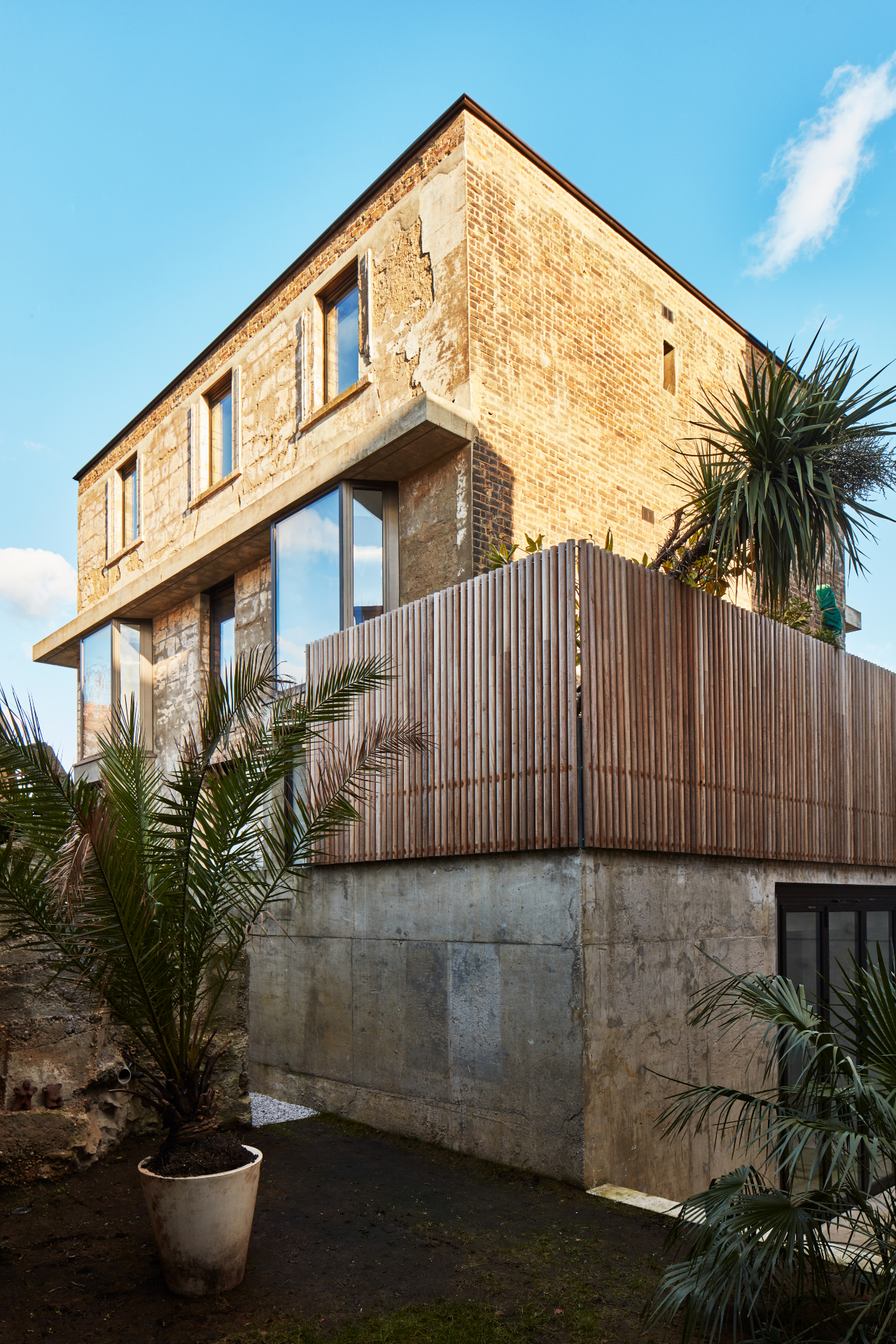


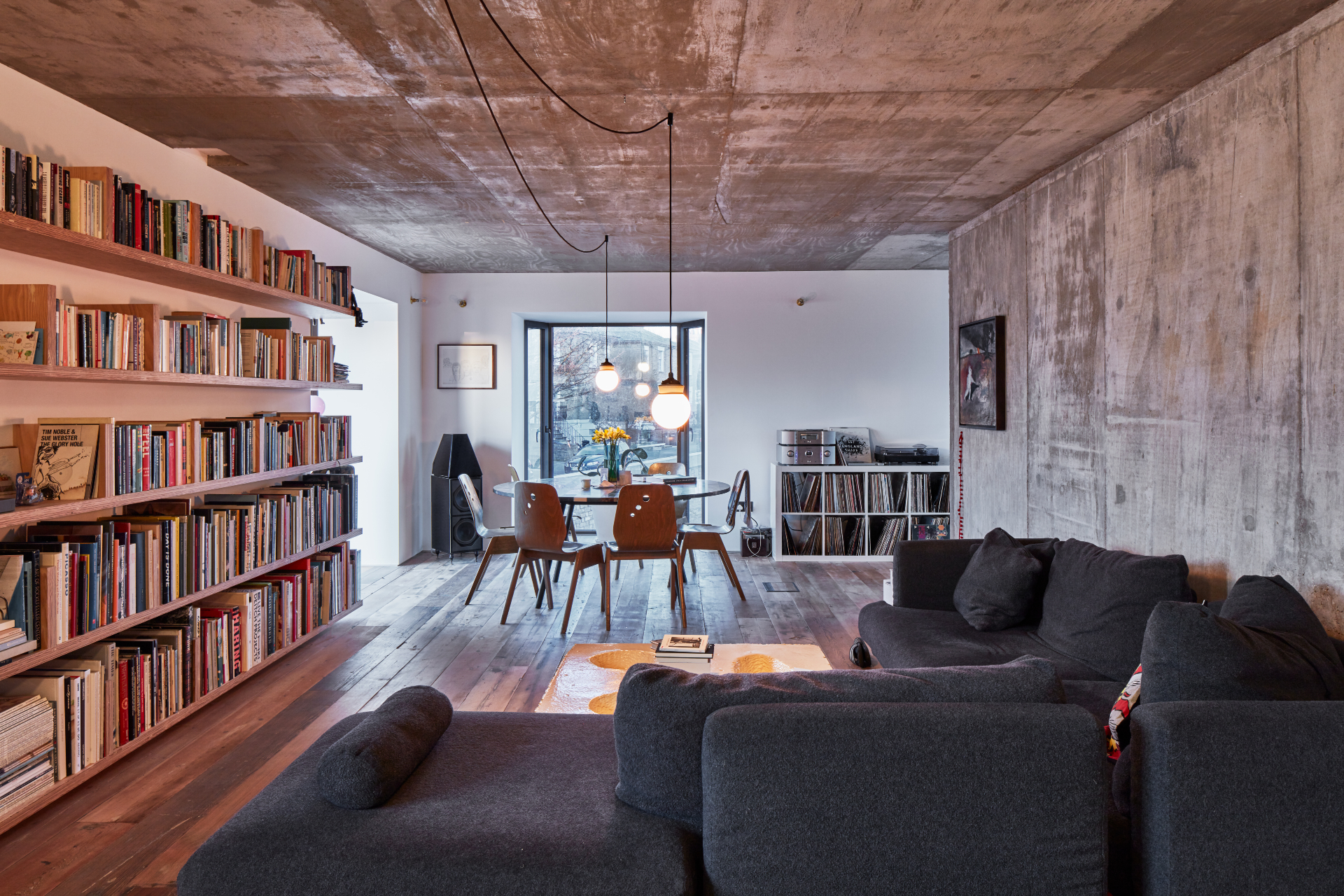
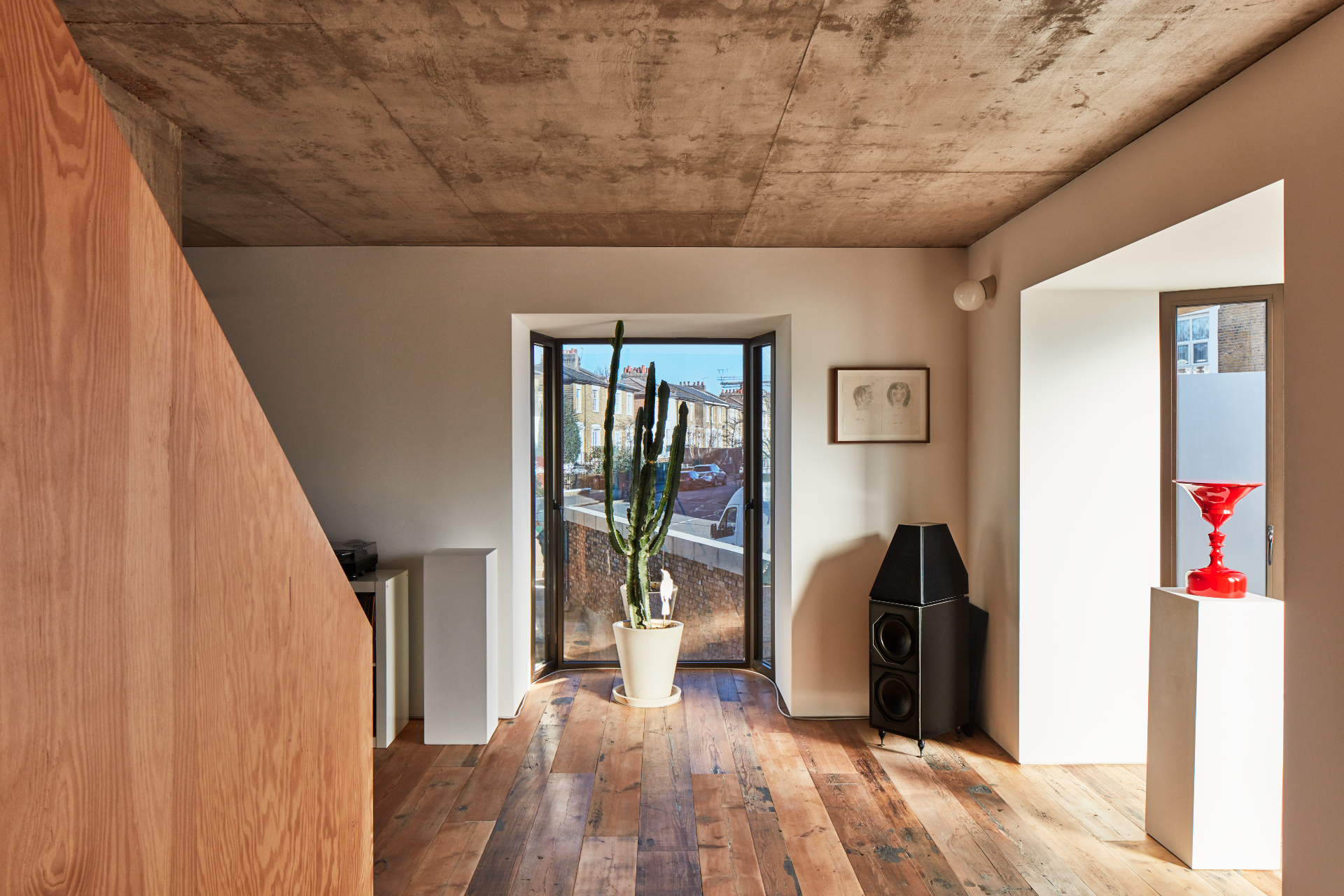
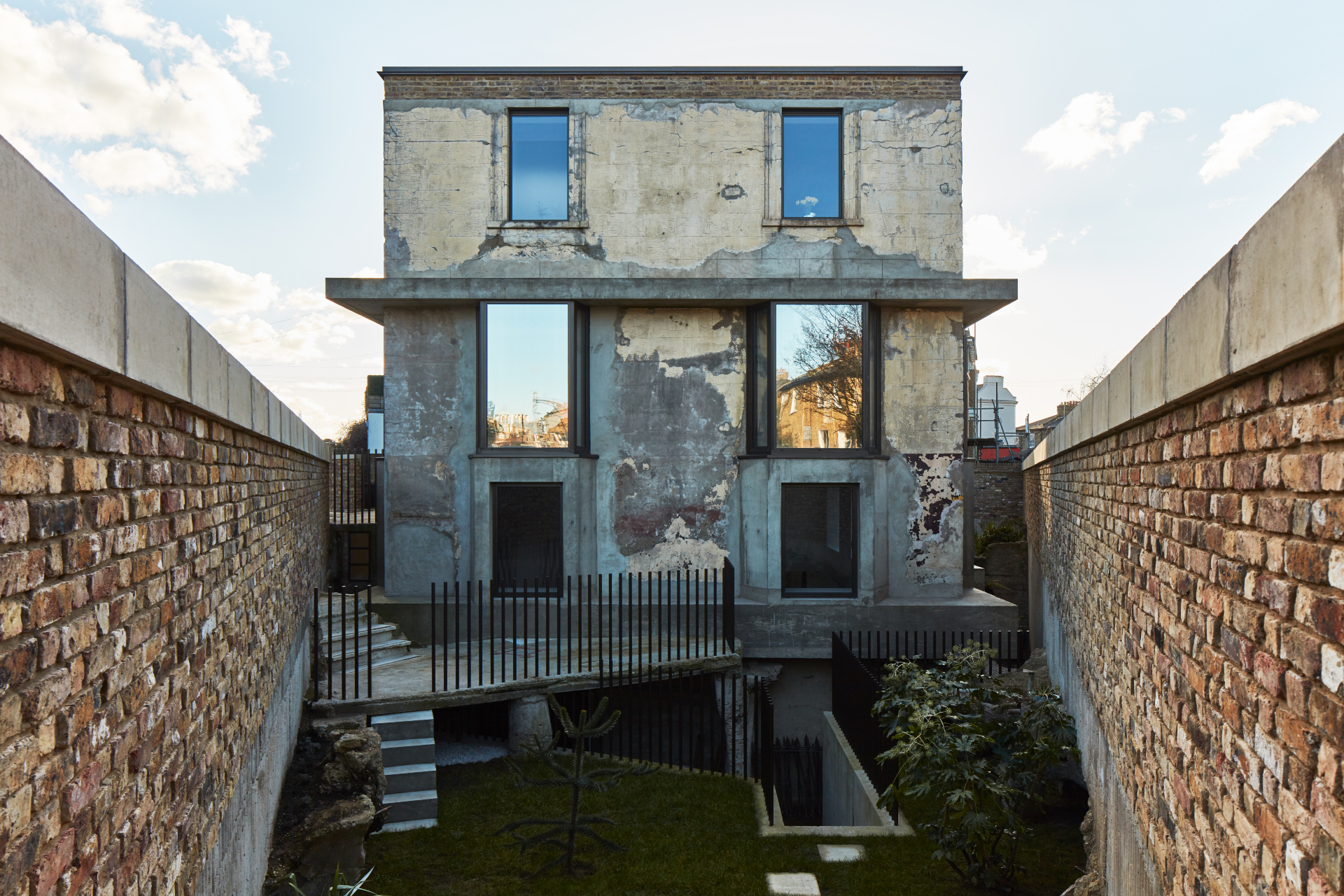
INFORMATION
adjaye.com
‘I Was a Teenage Banshee‘ by Sue Webster is out now, published by Rizzoli
Receive our daily digest of inspiration, escapism and design stories from around the world direct to your inbox.
Ellie Stathaki is the Architecture & Environment Director at Wallpaper*. She trained as an architect at the Aristotle University of Thessaloniki in Greece and studied architectural history at the Bartlett in London. Now an established journalist, she has been a member of the Wallpaper* team since 2006, visiting buildings across the globe and interviewing leading architects such as Tadao Ando and Rem Koolhaas. Ellie has also taken part in judging panels, moderated events, curated shows and contributed in books, such as The Contemporary House (Thames & Hudson, 2018), Glenn Sestig Architecture Diary (2020) and House London (2022).
-
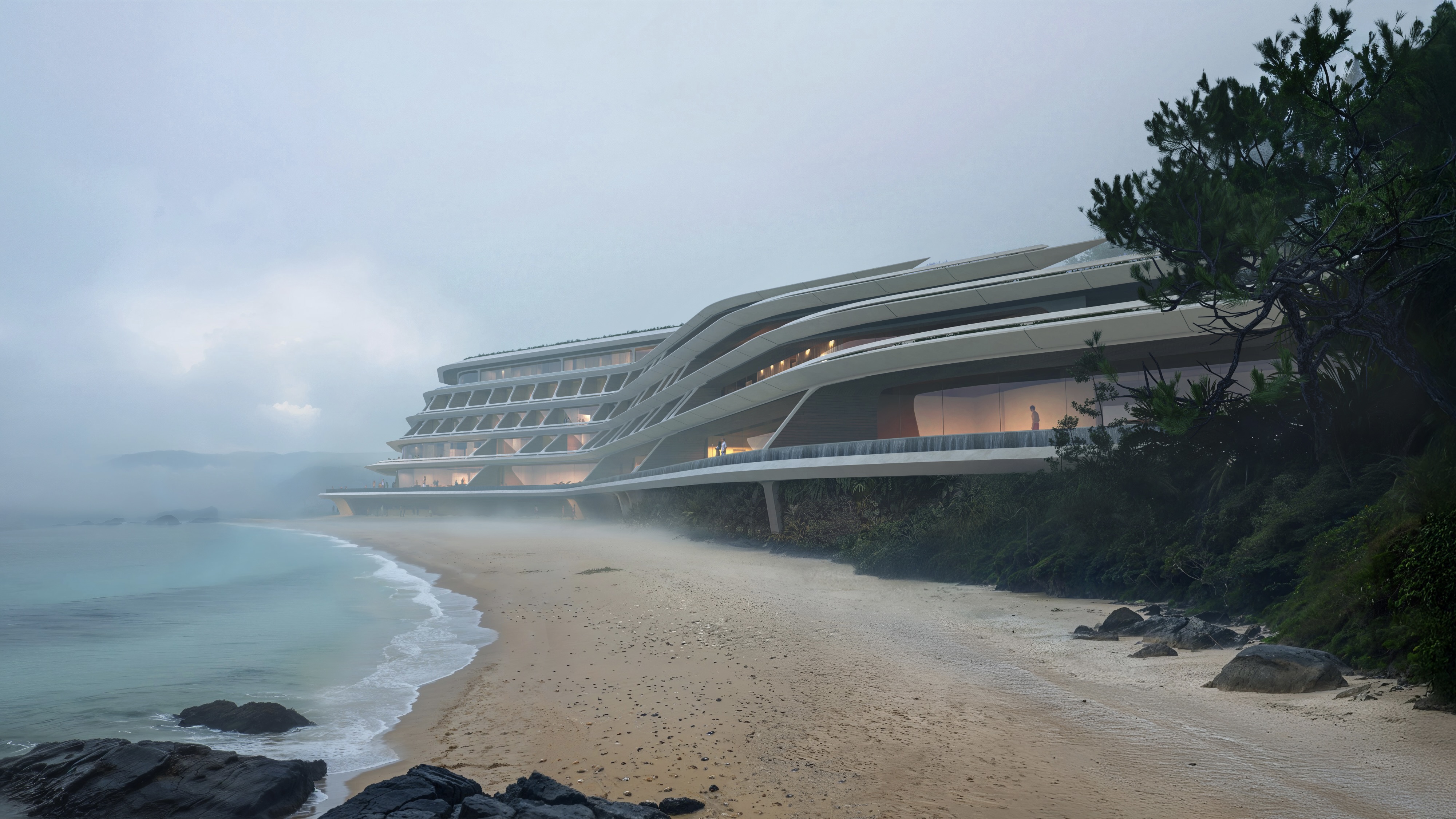 Curvilinear futurism meets subtropical beaches at Not A Hotel’s ZHA-designed Okinawa retreat
Curvilinear futurism meets subtropical beaches at Not A Hotel’s ZHA-designed Okinawa retreatZaha Hadid Architects has revealed the design for the first property in Not A Hotel’s futuristic new Vertex collection, coming soon to southern Japan
-
 Gorden Wagener leaves the helm of Mercedes-Benz design after 28 years with the company
Gorden Wagener leaves the helm of Mercedes-Benz design after 28 years with the companyThe German designer is stepping down from the role of chief design officer at Mercedes-Benz. We look back at his influence and impact on the world of automotive and luxury design
-
 These Christmas cards sent by 20th-century architects tell their own stories
These Christmas cards sent by 20th-century architects tell their own storiesHandcrafted holiday greetings reveal the personal side of architecture and design legends such as Charles and Ray Eames, Frank Lloyd Wright and Ludwig Mies van der Rohe
-
 Arbour House is a north London home that lies low but punches high
Arbour House is a north London home that lies low but punches highArbour House by Andrei Saltykov is a low-lying Crouch End home with a striking roof structure that sets it apart
-
 A former agricultural building is transformed into a minimal rural home by Bindloss Dawes
A former agricultural building is transformed into a minimal rural home by Bindloss DawesZero-carbon design meets adaptive re-use in the Tractor Shed, a stripped-back house in a country village by Somerset architects Bindloss Dawes
-
 RIBA House of the Year 2025 is a ‘rare mixture of sensitivity and boldness’
RIBA House of the Year 2025 is a ‘rare mixture of sensitivity and boldness’Topping the list of seven shortlisted homes, Izat Arundell’s Hebridean self-build – named Caochan na Creige – is announced as the RIBA House of the Year 2025
-
 In addition to brutalist buildings, Alison Smithson designed some of the most creative Christmas cards we've seen
In addition to brutalist buildings, Alison Smithson designed some of the most creative Christmas cards we've seenThe architect’s collection of season’s greetings is on show at the Roca London Gallery, just in time for the holidays
-
 In South Wales, a remote coastal farmhouse flaunts its modern revamp, primed for hosting
In South Wales, a remote coastal farmhouse flaunts its modern revamp, primed for hostingA farmhouse perched on the Gower Peninsula, Delfyd Farm reveals its ground-floor refresh by architecture studio Rural Office, which created a cosy home with breathtaking views
-
 A revived public space in Aberdeen is named Scotland’s building of the year
A revived public space in Aberdeen is named Scotland’s building of the yearAberdeen's Union Terrace Gardens by Stallan-Brand Architecture + Design and LDA Design wins the 2025 Andrew Doolan Best Building in Scotland Award
-
 The Architecture Edit: Wallpaper’s houses of the month
The Architecture Edit: Wallpaper’s houses of the monthFrom wineries-turned-music studios to fire-resistant holiday homes, these are the properties that have most impressed the Wallpaper* editors this month
-
 A refreshed 1950s apartment in East London allows for moments of discovery
A refreshed 1950s apartment in East London allows for moments of discoveryWith this 1950s apartment redesign, London-based architects Studio Naama wanted to create a residence which reflects the fun and individual nature of the clients